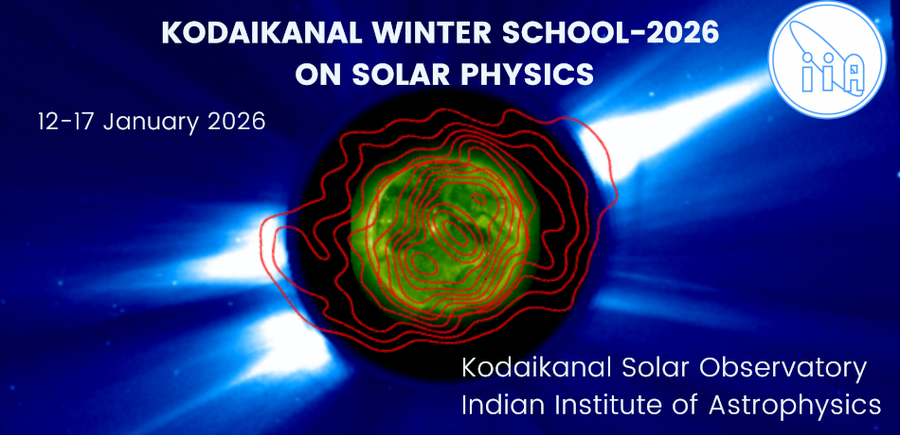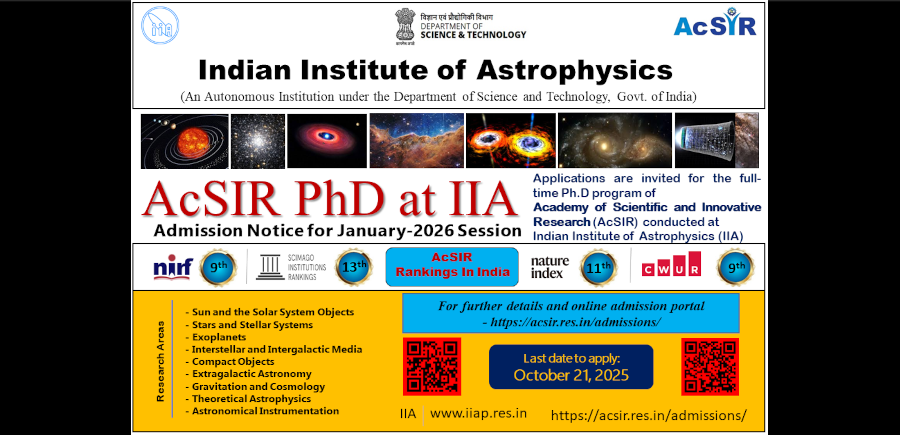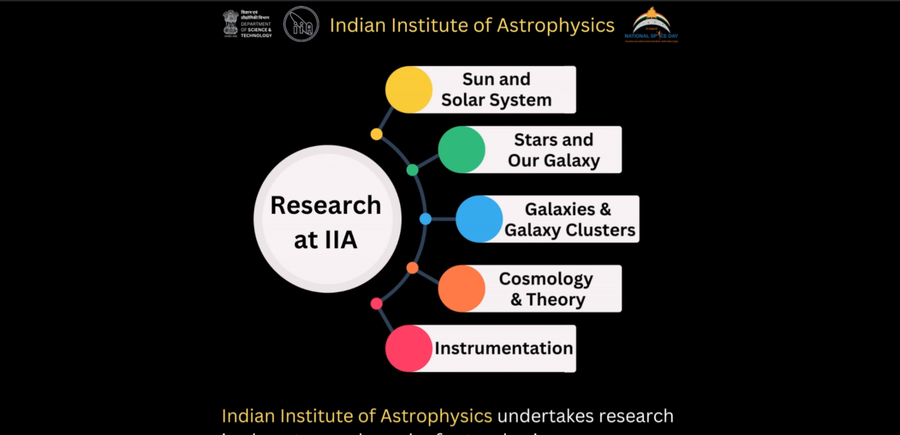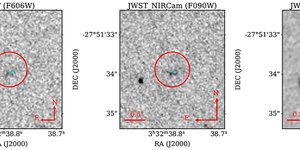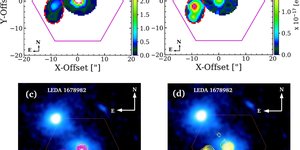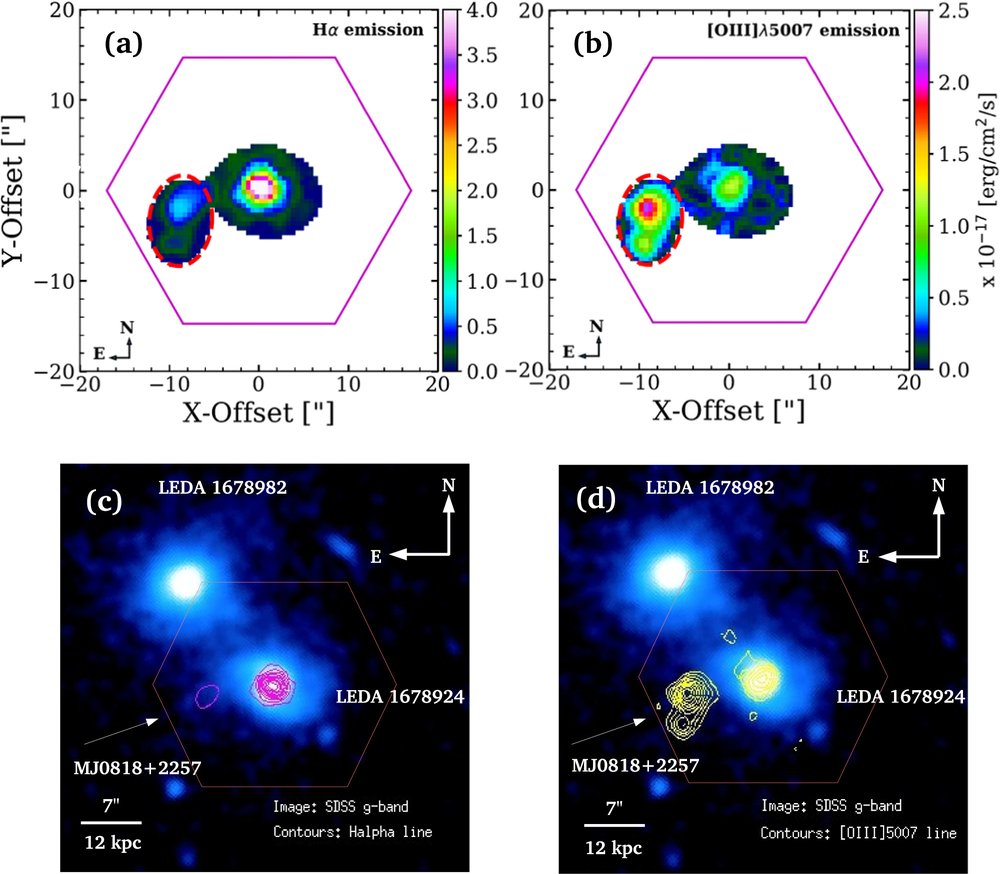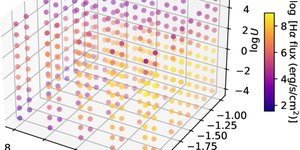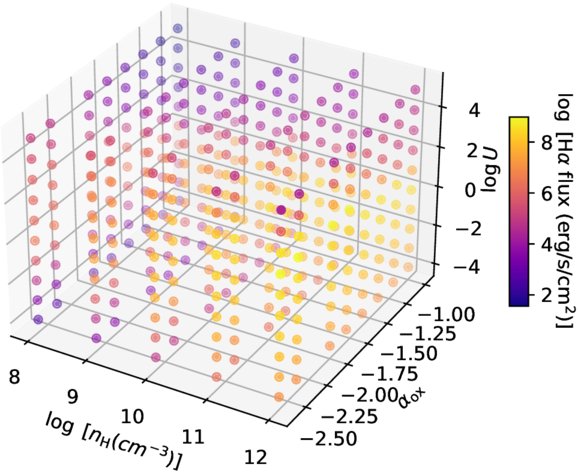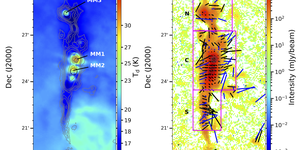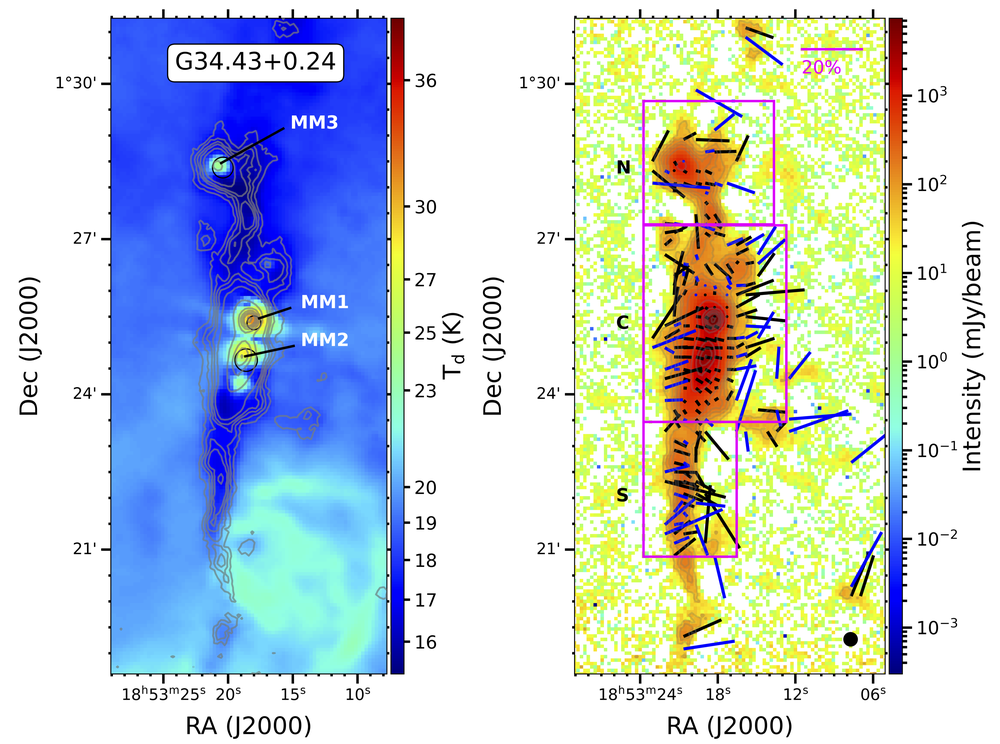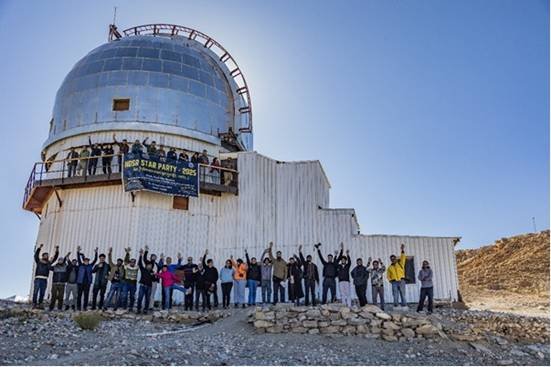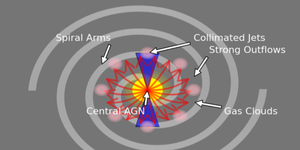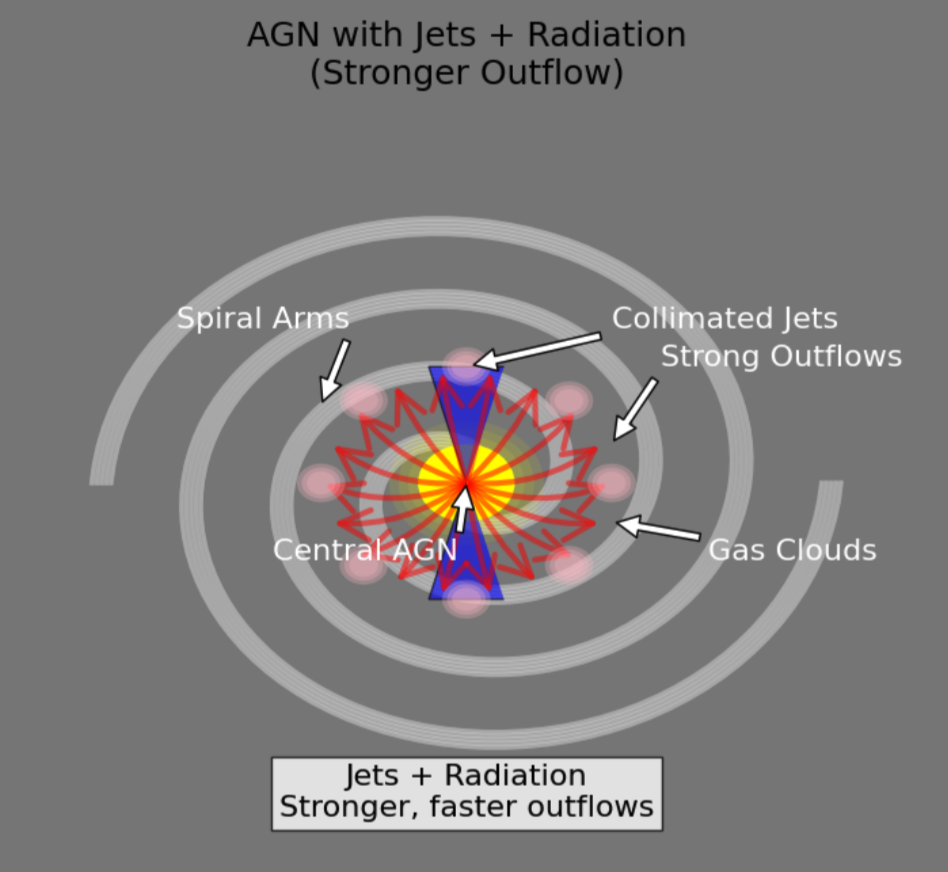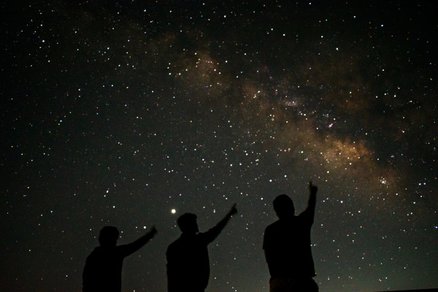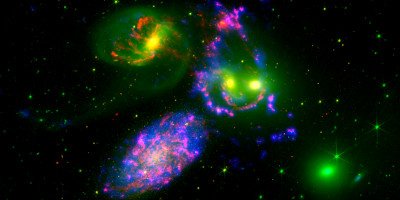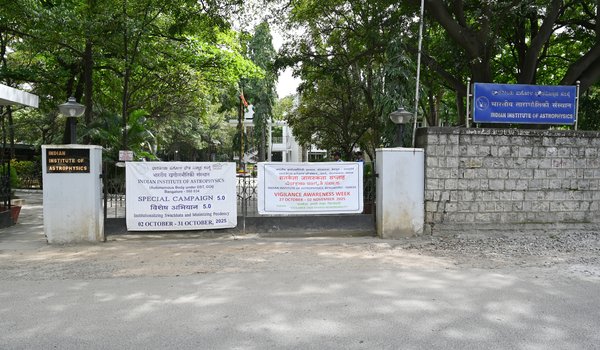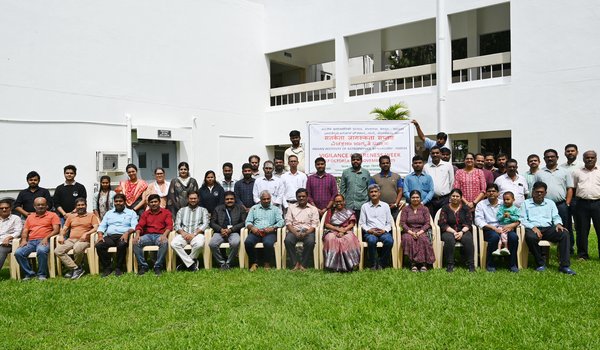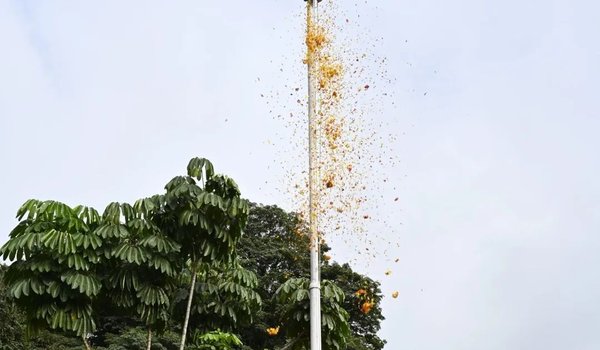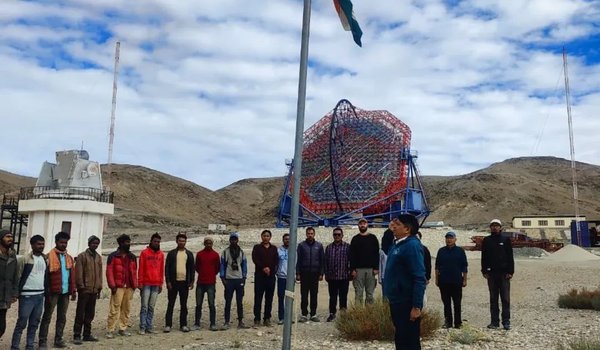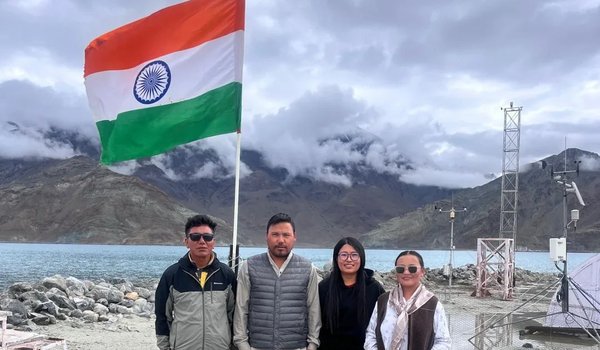CDF-S XT1 and XT2 are considered two “canonical” extragalactic fast X-ray transients (FXTs). In this work, we report new constraints on both FXTs, based on recent JWST NIRCam and MIRI photometry, as well as NIRspec spectroscopy for CDF-S XT2 that allow us to improve our understanding of their distances, energetics, and host galaxy properties compared to the pre-JWST era.
Methods. We use the available HST and JWST archival data to determine the host properties and constrain the energetics of each FXT based on spectral energy distribution (SED) photometric fitting.
Results. The host of CDF-S XT1 is now constrained to lie at zphot = 2.76+2.21-0.13, implying a host absolute magnitude MR = −19.14 mag, stellar mass M* ≈ 2.8 × 108 M⊙, and star formation rate SFR ≈ 0.62 M⊙ yr−1. These properties lie at the upper end of previous estimates, leaving CDF-S XT1 with a peak X-ray luminosity of LX, peak ≈ 2.8 × 1047 erg s−1. We argue that the best progenitor scenario for XT1 is a low-luminosity gamma-ray burst (GRB), although we do not fully rule out a proto-magnetar association or a jetted tidal disruption event involving a white dwarf and an intermediate-massive black hole. In the case of CDF-S XT2, JWST imaging reveals a new highly obscured component of the host galaxy, previously missed in HST images, while NIRspec spectroscopy securely places the host at zspec = 3.4598 ± 0.0022. The new redshift implies a host with MR = −21.76 mag, M* ≈ 5.5 × 1010 M⊙, SFR ≈ 160 M⊙ yr−1, and FXT LX, peak ≈ 1.4 × 1047 erg s−1. The revised energetics, similarity to X-ray flash event light curves, small host offset, and high host SFR favor a low-luminosity collapsar progenitor for CDF-S XT2. Although a magnetar model is not ruled out, it appears improbable.
Conclusions. While these HST and JWST observations shed light on the host galaxies of XT1 and XT2, and by extension, on the nature of FXTs, a unique explanation for both sources remains elusive. Rapid discovery, for instance, with the Einstein Probe satellite, and contemporaneous multiwavelength detections of FXTs remain essential for clarifying the nature of FXTs.
Read more
